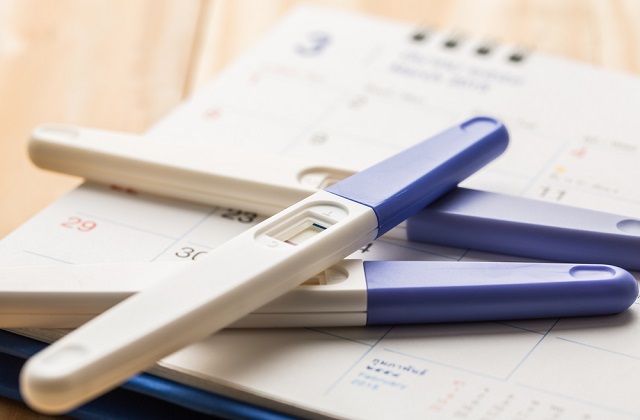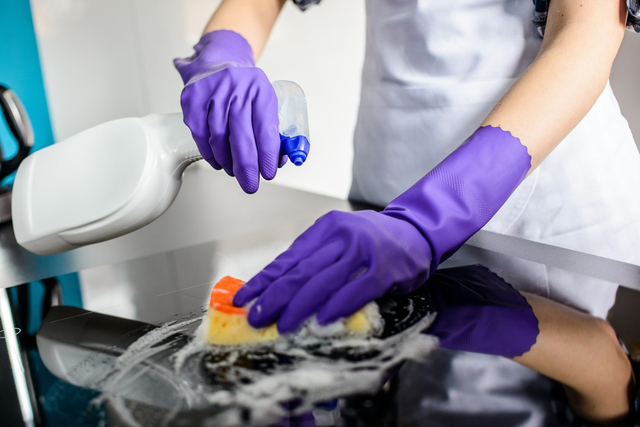Breastfeeding For Working Mothers
Breastmilk contains many protective substances and antibodies that help your baby fight against viruses and allergies. It provides the ideal nutrition for your baby with a nearly perfect mix of vitamins, protein and fat. Furthermore, the skin-to-skin touching and eye contact enables bonding between the mother and baby.
Many mothers face the difficult choice of whether to continue breastfeeding after they return to their workplace. One of the reasons why they hesitate about expressing breast milk at work is their tight and busy schedule.
However, with adequate planning and adjustment, working mothers do not need to worry about not being able to breastfeed after returning to work.
In this article, we provide tips that you can adopt right after your delivery to ensure that you will be able to continue breastfeeding your baby after going back to work.
1. Building a good milk supply
To ensure a good milk supply, you should breastfeed your baby as soon as possible after your delivery. This will help you to establish your milk supply early. You should also avoid giving your baby supplementary food, water or formula milk as it might reduce your baby’s chance to practise suckling at the breast and the stimulation of the breast and therefore decreasing your milk production.
After your delivery, do not hesitate to seek help from your nurse or lactation consultation if you experience any difficulties with latching your baby onto your breast. Breastfeeding your baby exclusively during the first four weeks will help to build up your milk supply.
2. Expressing breastmilk
You may start to express and store your breastmilk after four weeks of exclusive breastfeeding. You may choose to either express your breast milk by hand or using the breast pump.
Start by expressing breastmilk once a day before gradually increasing the frequency according to the number of feeds your baby will miss while you are at work. In the meantime, continue to breastfeed your baby directly.
Methods of expressing breastmilk
If you choose to express the breast milk by hand, place the forefinger and thumb at the edge of the areola, which is the dark area of the breast and press back firmly against your breast. Then bring your fingers together and compress the areola using the finger pads. It is encouraged that you compress your breast in a rhythmic manner when expressing milk.
You can also use a hand pump which preferably allows you to control over the suction. Make sure that the flange of the pump is placed over the areola to form a complete seal, just like how your baby’s mouth would do the same when you breastfeed. Pump continuously for five minutes and alternate each breast. You should also massage the breast in between the pumps. Each session should not last more than 30 minutes in order to not tire yourself.
You can also choose to use a battery operated or electric pump. Begin with minimum power before increasing the intensity to which you are comfortable with. To reduce pumping time and promote milk production, you might want to try fully automatic electric pumps or those that allow for double pumping.
Storing expressed milk
After you have expressed your breast milk, you must always store them in feed size amounts in sterilised bottles. This will prevent wastage and also makes it convenient for you during feeding times.
The expressed milk can last for 48 hours in the refrigerator at 4 degrees Celcius or 3 to 6 months in the freezer at 0 degrees Celcius. Label all the bottles with the dates and time of collection. Remember to use those that are expressed at an earlier date.
After pumping away from home, put the bottles in a cooler box with ice packs. When you have reached your destination, transfer the expressed milk to the refrigerator immediately. You do not need to freeze the milk unless you have a lot of excess milk such that your baby is unable to consume by 48 hours.
To feed your baby with the expressed milk, thaw and warm the milk by putting it in warm water for 10 minutes. Frozen breast milk can be transferred to thaw in the refrigerator before standing the bottle in warm water. Never boil the milk or warm it in the microwave oven. You should also not refreeze the milk after it has been thawed as it might be contaminated. Also, discard any excess milk left in the bottle after a feed.
3. Weaning from the breast
To allow your baby to get used to the bottle so someone else can bottle feed him or her with your breast milk when you are away for work, you can let your baby feed from the bottle after the first four weeks. However, you have to make sure that he or she has already learnt how to suck well at your breast. This is because your baby might be confused by the bottle since the method of sucking is different for from breast and bottle.
When introducing the bottle to your baby, you may want to let your family member or your partner to bottle feed your baby to prevent him or her from searching for your breast. To allow him or her to grow used to the bottle, you can feed your baby once a day with the bottle when he or she is above one month of age. Two weeks before you return to work, you can then increase the frequency of bottle feeding throughout the day according to the number of feeds your baby will miss while you are at work.
Total or partial breastfeeding
Mothers might choose between total or partial breastfeeding when they return to work.
Total breastfeeding means you will express your breast milk during work for feeding your baby the next day.
Partial breastfeeding means you will be feeding your baby from the breast when you are at home but giving him formula milk when you are away from home at work. To allow your baby to get used to formula milk, you can substitute one feed with formula milk first before gradually increasing the number of feeds to be substituted.
When you first start weaning, your breast might be overfull and painful for you. Thus, you can express a minimum amount to relief your breasts until you feel comfortable. This can also allow your body to get used to the reduced stimulation, reduce and gradually suspend the milk production while you are at work.
Preparation for expressing breast milk at work
Before expressing the milk, ensure that the equipment are properly sterilised. You should also re-sterilise them after every use. At your workplace, make sure that there is a clean place for you to express your milk. To encourage milk flow, you can think of your baby and also massage your breasts.
To store your milk after that, you will also need to bring an ice cooler box if your office does not have a fridge. Additionally, be sure to inform your employer and colleagues to prevent any misunderstandings when you have to leave to express the breast milk.
Problems faced
Some problems faced while expressing breastmilk at work may be that you have no time to do so due to your busy schedule. As such, your breasts might be hard and painful from the milk accumulated. Rather than ignoring it, it is advisable that you do a five-minute expressing to release some milk from your breast. Expressing the milk to make yourself comfortable is important even though you do not have the time to express and store the milk.
Some mothers might experience the leaking of breastmilk. Thus, you can use absorbent paddings to help ease the discomfort. Applying pressure on the nipple by folding your arm across your chest might also help to stop the flow. You can also wear floral clothing or outerwear to conceal the stains.
Support from the family
Your husband and family members should support your decision to combine breastfeeding with your work.
Also, the fatigue from work, taking care of the baby, doing household chores and breastfeeding can really take its toll on the mother. Hence, if possible, you can get help from your husband or family members to look after the baby and help with the household chores. Constant encouragement from your spouse can also motivate you to persevere in this journey.
It takes a village to raise a child !
Join our WhatsApp Parenting Chat Groups By Area in Singapore.








